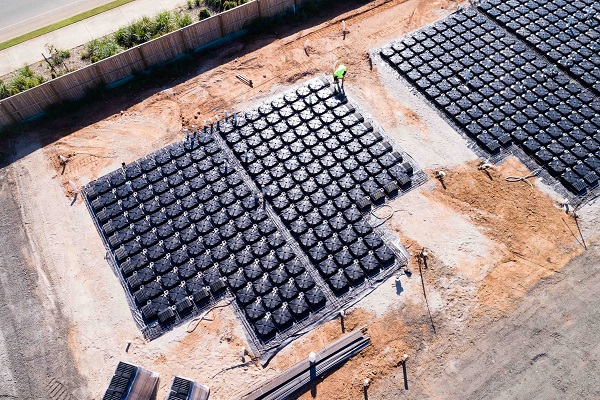Sustainable innovation aims to revolutionise the way dwellings are constructed

A generation ago, the waffle pod foundation forever changed the way engineers design, concreters prepare and builders construct homes – and now a new, sustainable product manufactured in Australia is creating the latest step change in foundation design, according to Biax general manager Jim Prior.
Recently acquired by Holloway Group, Biax represents a clever re-thinking of the waffle pod, replacing unsightly, hard-to-manage, environmentally damaging polystyrene blocks with a compact, lightweight and sustainably produced product.
The company says that broad adoption of Biax could help the construction industry eliminate 25,000 tonnes of styrene from the building market each year.
While other brands have attempted to completely redesign the waffle pod to achieve better environmental outcomes, Biax retains the best elements of the waffle pod design, but replaces the bulky styrene blocks with compact, recycled plastic pods.
Jim says Holloway Group was the perfect acquisition partner for Biax: “Holloway Group was already manufacturing the product. Through this acquisition, we have been able to remove one of the layers between manufacturer and purchaser, which will help bring costs down, but more than that, the acquisition will allow Holloway Group to leverage its manufacturing capability and national footprint to bring scale to the Biax operation.
“The product has already been installed in over 800 slabs nationally, but we anticipate a rapid acceleration in demand that we are excited to meet. We know that about 80,000 residential waffle pods are poured each year, so there is a huge opportunity to be met and Holloway Group is positioned to keep up with fast-growing demand.”
He adds that it has taken time for the industry to recognise the need to move on from foam: “The waffle pod foundation system serves its purpose well, providing a very reliable, proven, cost-effective base for building residential dwellings.”
“Every builder and concreter knows that the polystyrene pods are a problem. They take up a huge amount of space on sites that are only getting smaller, they’re unsightly and they inevitably end up creating a mess throughout neighbourhoods when they break up with the slightest wind, resulting in pieces spreading to nearby properties or into waterways.”
In addition to its sustainability credentials, the stackable Biax product takes up far less precious space on site – in fact, about 80% less than the space required for foam.
Finding an alternative is something the industry has been working on for a long time, but Jim says the products weren’t right, and the timing wasn’t right.
“It’s understandably difficult for engineers and builders to move away from a system they know is fundamentally reliable. While it clearly has flaws, when an engineer specifies a foam-filled waffle pod, they know it’s going to perform as expected and comply with all the relevant building codes. The trouble with some of the earlier products that tried to replace foam was that they threw the baby out with the bathwater, relying on an entirely different foundation design,” Jim says.
“Biax retains everything that is good about the waffle pod slab, but replaces the foam with a product that is made of recycled and recyclable material. It’s stackable, so it’s easier to transport and store on site, and it’s priced comparably. Rather than simply replicating the same sizes as waffle pods, the Biax sizes are specifically calculated to also offer heightened engineering outcomes.”
He notes that the building industry is under increasing pressure to adopt sustainable practices, and Biax can help achieve measurable improvements.
“Social licence to operate is becoming more of a focus area for builders, who face mounting scrutiny over their commitment to sustainability. There will come a point, probably soon, where environmentally unsustainable components like polystyrene will simply become unacceptable.”
